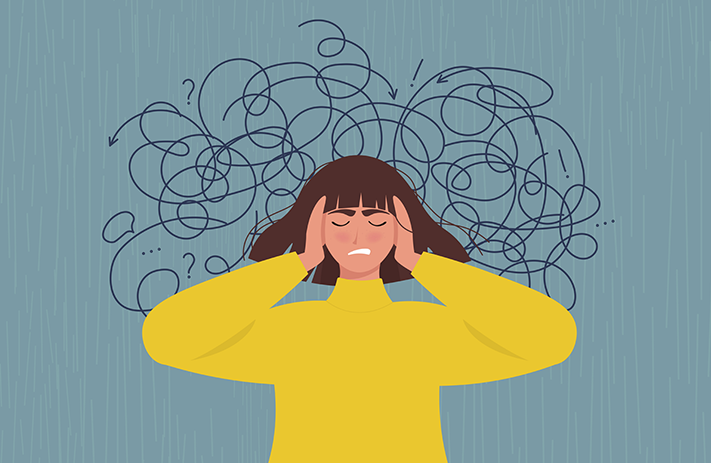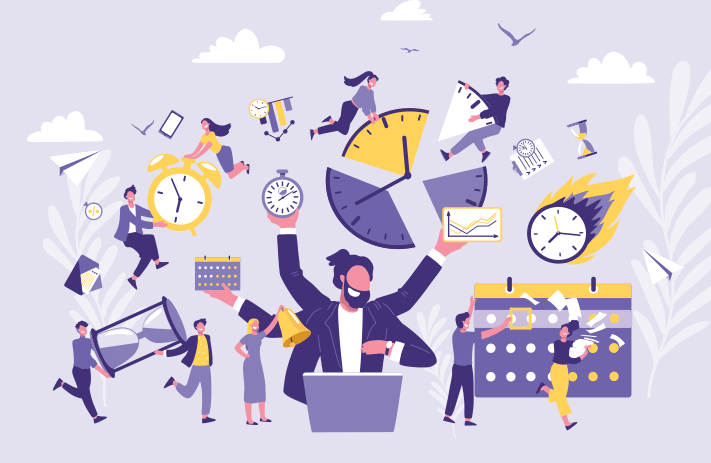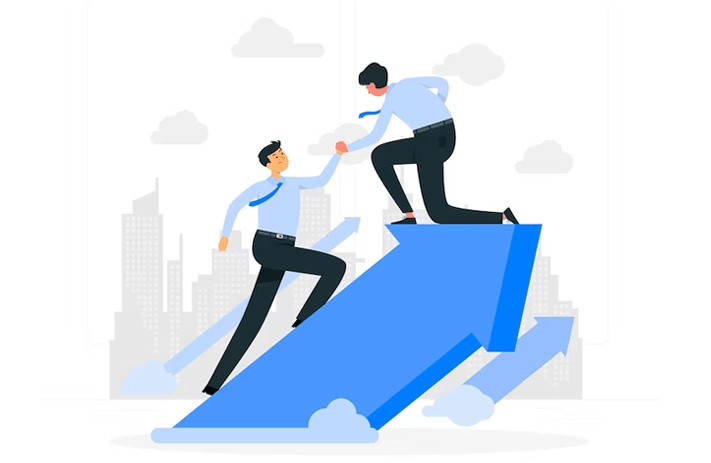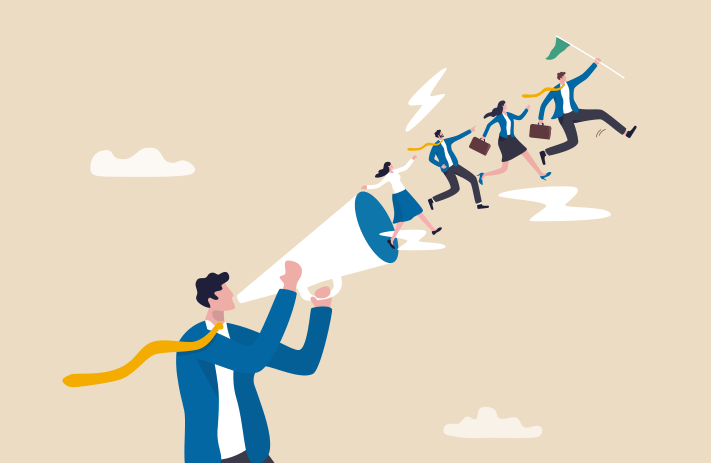
Click the button to start reading
7 Reasons You Can’t Focus on Work … And What You Can Do About It!
We’ve all experienced those days where it just seems impossible to stay focused on work. One moment you’re typing an email, the next you’re scrolling your Facebook feed, then you’re catching up with a coworker, and before you know it, the workday’s over, and it doesn’t feel like you’ve accomplished anything.
It’s so frustrating–especially when you have a lengthy to-do list and really need to focus. Fortunately, in this blog, we’ll help you get back on track by identifying the most likely culprits of your poor focus and providing practical solutions for resolving them.
Reason # 1 – You’re Just Darn Tired
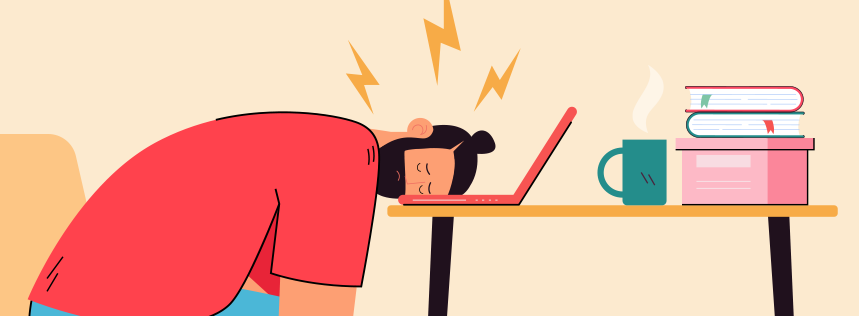
Feeling dead tired at work is the worst. And although you probably try to cope the best you can (i.e., by mainlining gallons of coffee), sometimes it can feel next-to-impossible to shake your fatigue.
Which isn’t surprising since research shows that sleep deprivation actually disrupts communication between the brain cells–causing them to respond slower and fire less strongly. In layman’s terms, we call that brain fog.
Unfortunately, brain fog means we experience lower levels of alertness and concentration. Worse, because we find it harder to stay focused, we struggle to perform complex tasks or those that require logical reasoning.
So, How Can You Regain Your Focus?
Although there isn’t a quick fix for fatigue, there are things you can do that’ll improve your concentration.
For starters, it’s a good idea to get some exercise in. While you don’t have to kill it at the gym for an hour, a brisk 5-10 minute walk in the fresh air can be invigorating.
More importantly, it will get your blood pumping, while increasing the levels of cortisol, epinephrine, and norepinephrine in your body. Since these hormones help elevate energy levels, a walk can be especially useful for overcoming fatigue.
Another great tactic for regaining your focus is to take a 20-minute power nap. Admittedly, that may be easier for remote workers, but if you can sneak away during your lunch hour to take a quick nap in your car, go for it. Just 20 minutes of zzz’s can do wonders for your concentration.
In fact, according to one study, naps are more effective than caffeine for improving verbal memory, procedural motor skills, and perceptual learning.
And speaking of that caffeine, you’d be well-advised to take it easy, because Medical News Today reports that contrary to popular belief, caffeine can sometimes cause tiredness.
Instead, reach for a glass of water. The vast majority of Americans (75%) are chronically dehydrated. Worse, dehydration can have a huge impact on concentration.
Finally, if you regularly feel tired, it’s time to reevaluate your sleep schedule–and perhaps even start going to bed earlier at night. According to the Sleep Foundation, healthy adults need 7-9 hours of sleep a night.
Getting less than that can not only impair your concentration, but it can also worsen your mood, weaken your immune system, and increase your risk of high blood pressure, heart disease, and diabetes.
Reason #2 – You’re Feeling Overwhelmed
Sometimes a task can seem so complex that you don’t even know where to get started, leaving you overwhelmed. And because you’re overwhelmed, you start stressing out–which is incredibly detrimental to concentration.
After all, think about it. How easily can you concentrate when you’re having racing thoughts about how you can’t figure out what to do, have no clue where to begin, and your career is probably toast if you don’t somehow start magically producing?
Because your mind is focused on your worry–rather than the task at hand–your concentration is shot.
So, How Can You Regain Your Focus?
Fortunately, the Swiss Cheese method is a great technique for regaining your focus when you’re feeling overwhelmed.
To use it, you’ll want to begin by taking a deep breath and spending a couple minutes thinking positively about the task you’re struggling with, for instance by imagining how great you’ll feel once you’ve completed it.
Then, from that improved perspective, spend a few minutes thinking about a list of short tasks you can do to complete the larger one. You may need to break a few bigger tasks into smaller action items to come up with your list.
Once you’ve created your list, take a piece of paper and draw circles on it, putting each small task into a circle. Then, start on the task that most appeals to you. Once you’ve completed it, darken the circle to indicate the task is done before moving on to your next most appealing task.
The Swiss Cheese method works so well, because it makes complex tasks seem far less intimidating. Even better, once you begin to “poke more holes in the Swiss cheese” i.e., darken the circles, you’ll gain momentum which’ll make it that much easier to complete the task at hand.
Reason #3 – You’re Trying to Multitask
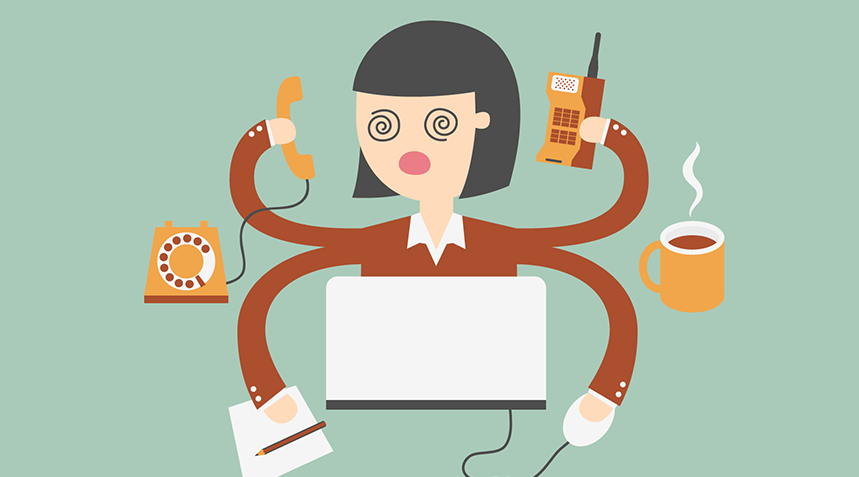
Sometimes we’re attempting to do several things at once–for instance, like talking on the phone while responding to an email. Mind you, with 20 browser tabs, five documents, and two email clients open, as music plays in the background.
While this may seem like a timesaver, the research is clear–only a scant 2.5% of people can multitask well. For the rest of us, our brains are unfortunately, only set up to perform one task at a time.
In fact, one study found that it takes us 25 minutes on average to fully return to a task after having been interrupted. With multitasking, we’re constantly dividing our attention between multiple tasks–and typically doing neither of them well.
As a result, the work we’re doing is more prone to errors. And as bad as that is, the news gets worse, because most people multitask to save time–yet by trying to do several tasks at once, it can take us longer to complete our work than had we just single-mindedly focused on one task, before tackling the next one.
So, How Can You Regain Your Focus?
Fortunately, there’s one time management technique that people swear by to maintain focus on a single task. It’s called the Pomodoro Technique, and it was invented by university student, Francesco Cirillo, in the late 1980s.
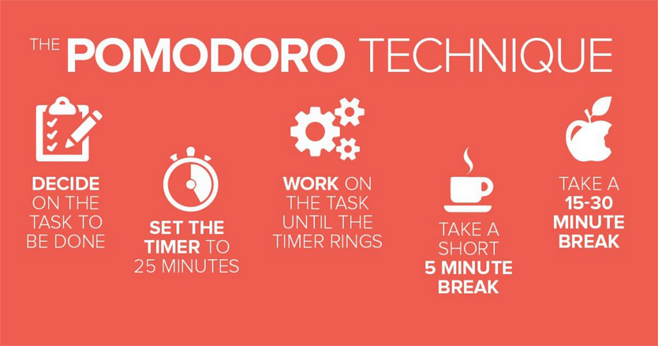
At the time, he realized that by working in short, timed sprints, he could more easily maintain his focus. And after experiencing success with the method, he went on to write a book about it. Since then, the Pomodoro Technique has become wildly popular.
Here’s how the Pomodoro Technique works:
- Spend 25 minutes working on a task without distractions.
- Take a 5-minute break (referred to as a pomodoro)
- After 4 pomodoros, take a longer break of 15-20 minutes.
Because you’re trying to make as much progress as you can over the course of 25 minutes, the Pomodoro Technique makes it easy to remain hyperfocused on your work–rather than squandering your time on seemingly small distractions that can add up over the course of a day.
Reason #4 – You Hate What You’re Doing
Sometimes we simply loathe what we’re working on–and will do virtually anything else to avoid tackling it. So, rather than sitting down and preparing the dreaded monthly sales report for the management team, instead we surf the Internet, text our friends, visit with coworkers, and so on.
Unfortunately, the problem with procrastination is that while it may alleviate our negative emotions in the short-term, those feelings will return every time we go to work on that task–along with greater stress and anxiety, as well as feelings of low self-esteem and self-blame.
Worse, if you make a habit of procrastinating, it can have a detrimental effect on your mental and physical wellbeing. So much so that chronic procrastinators have been shown to experience general psychological distress and low life satisfaction–along with symptoms of depression and anxiety.
They’re also more likely to experience headaches, insomnia, digestive issues, colds, and even heart disease!
So, How Can You Regain Your Focus?
One of the best ways to overcome procrastination is the Eat the Frog Method, which was coined by Productivity Consultant Brian Tracy, who was inspired by advice attributed to Mark Twain …
“If it’s your job to eat a frog, it’s best to do it first thing in the morning. And if it’s your job to eat two frogs, it’s best to eat the biggest one first.”
The general philosophy being that by eating the frog first thing in the morning, you have the satisfaction of knowing that it’s probably the worst thing that’ll happen to you all day long.
In the case of work productivity, your “frog” is your biggest, most important task–the one you’re most likely to procrastinate on. And if you have two “frogs,” you’ll want to tackle the biggest, ugliest one first i.e. right at the beginning of your workday.
The reason this method is so successful is because as todoist puts it, not all work hours are created equal. By tackling your most important task early in the AM when your energy and willpower is at its peak, you’ll have the mental energy and focus to complete it.
By contrast, if you tell yourself you’ll get to it at some nebulous time in the future, it’s easy to continually put the task off–increasing the likelihood you’ll be forced to tackle it when your willpower and focus is depleted.
Reason #5 – Your Time Management Skills Aren’t Very Good
It can be really hard to focus at work when time management isn’t your strong suit … which may be the case if you’re prone to starting sentences with, “Oh, let me just check my email/respond to a text/scroll my Facebook feed/call my chiropractor real quick. Then, I’ll get started on my work.”

This “just one more thing” phenomenon typically occurs when you feel like you have tons of time to get your work done … only to later discover that the day went by faster than you expected, and you didn’t accomplish half of what you set out to do.
So, How Can You Regain Your Focus?
If you suffer from poor time management skills, a not-to-do list may just be your new best friend. Unlike the more traditional to-do list, a not-to-do list is a list of tasks and behaviors that you absolutely will not do–instead, either deleting, outsourcing, delegating, or saying no to them.
By eliminating these draining activities, you can stay more focused–subsequently spending the bulk of your working hours on real stuff that actually moves the needle.
So, how do you decide what goes onto your not-to-do list? Strategy and Operations Consultant Blaz Kos recommends that you include the following types of items on your not-to-do list:
- Things you should say no to
- Anything that’s distracting you from being productive
- Tasks that can be deleted, outsourced, or delegated
- Other people’s responsibilities
- Any task that’s emotionally draining
- Bad habits you want to eliminate
- Things that simply don’t need to be done
- Stuff that’s out of your control
- Tasks that have little impact on your goals
By creating a list of these time-wasters, then avoiding these activities during your workday, not only will you manage your time better, but you’ll also find it way easier to remain focused and productive at work.
Reason #6 – You’re Distracted by Noise
It can be especially challenging to focus at work when you’re distracted by noisy chatter, which is often the case if you work in a cubicle or have an open office plan–and are subject to overhearing your coworkers’ conversations.
Worse, these types of working environments practically invite team members to drop by and gab, since your door’s “always open.”
For these reasons, 1 in 3 workers feel distractions from open work spaces hinder their productivity, and 1 in 6 believe that open work spaces have a negative impact on their creativity.
Furthermore, studies examining the effects of office noise determined that irrelevant background speech increases the likelihood of errors by as much as 4%-45%, depending on the type of task.
So, How Can You Regain Your Focus?
Noise-cancelling headphones are a great solution when you’re struggling with work distractions. Even better, you don’t have to listen to music for headphones to be effective–once coworkers see you with them on, they’ll probably assume you’re not to be bothered.
However, if you do choose to listen to music, be aware that not just any type will improve your focus. For instance, research shows that music with a fast beat or song lyrics is actually distracting.
That’s why if you want to dramatically improve your concentration and productivity, Entrepreneur suggests that you choose one of the following types of music:
- Classical Music – Researchers believe this calming genre can help people perform tasks more efficiently.
- Nature Music – Soothing nature sounds enhance concentration, while elevating your mood.
- Cinematic Music – A grandiose music soundtrack can be empowering, while also helping boost productivity.
- Video Game Music – Although it may seem unusual, video game music is specifically designed to help listeners tune out distractions, while remaining focused.
- Music Between 50-80 Beats Per Minute – This tempo is the focusing sweet spot, because it puts your brain into an alpha state–which is associated with creativity and learning.
- Your Favorite Music – Your fave Spotify playlist is the ideal choice for boosting productivity and your mood–as long as the music isn’t too fast, and the lyrics aren’t distracting.
Reason #7 – You’re Overworked
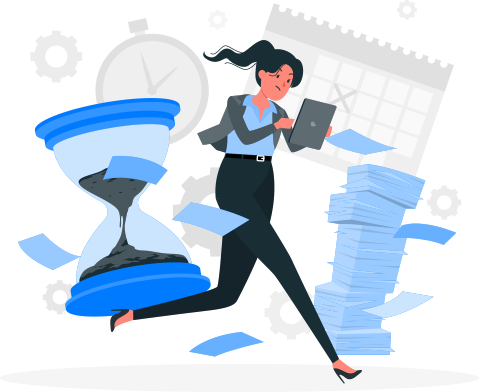
It’s logical to assume that when you have a ton on your plate, you’d be more focused, right? Well, not exactly. Instead, because your brain has more data to process, your focus takes a hit–decreasing your productivity.
Fortunately, it’s usually pretty obvious when you’re overworked and having trouble concentrating–for instance, when you have a ton on your to-do list but rather than working on it, you’re surfing the Internet.
However, at other times, your inability to focus can be more insidious, like when you’re forced to reread reports because you can’t fully understand them or when you’re completing busy work, rather than prioritizing those tasks that are most meaningful.
Worse, an excessive workload doesn’t just make it more difficult to focus, it can also negatively impact your physical health … leading to problems like depression, anxiety, high blood pressure, infertility, migraines, diabetes, allergies, heavy drinking, and impaired memory.
So, How Can You Regain Your Focus?
If you have an unrealistic workload that’s hampering your ability to concentrate, your first step is to speak to your manager about reducing your workload–perhaps by reevaluating priorities, delegating some of your responsibilities to others, or simply developing more realistic expectations.
That said, it may take some time to see a reduction in your work responsibilities. In the interim, you can improve your focus with the Eisenhower Matrix.
According to Asian Efficiency, here’s how the matrix works:
1. Begin by jotting down your to-do list.
2. Then, on a sheet of paper, draw a matrix that looks like this:
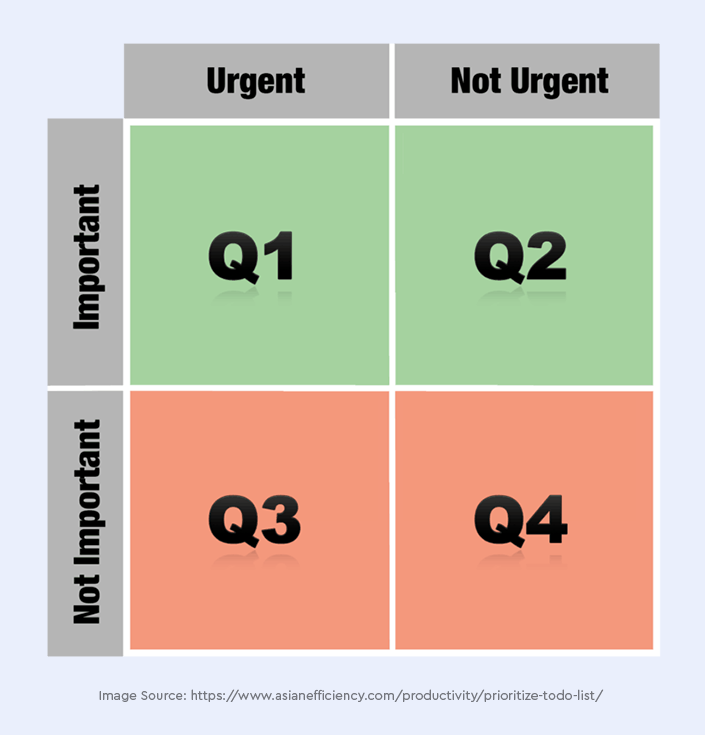
3. Now, enter your tasks into the matrix, sorting them into one of four categories:
- Q1 – The Quadrant of Necessity (Important, Urgent) – These are the types of tasks that were you to skip them, you’d experience a setback toward your goals; typically, these tasks are time-sensitive and deadline-driven (for instance, like preparing a proposal for a client).
- Q2 – The Quadrant of Extraordinary Productivity (Important, Not Urgent) – These are tasks that give you the highest return on your time and move you closer to your goals, but aren’t urgent (for instance, finding a productivity coach).
- Q3 – The Quadrant of Distraction (Not Important, Urgent) – This is stuff that doesn’t get you any closer to your goals, but it can feel urgent (for instance, a work meeting that isn’t important for what you do).
- Q4 – The Quadrant of Waste (Not Important, Not Urgent) – These tasks are complete timewasters–they don’t help you achieve your goals, and they don’t require your immediate attention (i.e., posting on your personal social media account).
4. Choose one item from the Important, Not Urgent category (Q2) and tackle it at the start of your workday. The reason Asian Efficiency recommends starting with a Q2 task, rather than a Q1, is because most people never manage to get around to their Q2 tasks.
5. Once you’ve completed a task from the Important, Not Urgent category, begin your first task in the Important/Urgent category–working on it until it’s done before moving on to the next task in that category.
6. If you manage to finish all your Important/Urgent tasks, move down the list, tackling your Q2 tasks–those you’ve deemed as Important/Non-Urgent.
The goal with the Eisenhower Matrix is to minimize your Q1 tasks (Important/Urgent) to the bare necessities, maximize your Q2 tasks (Important/Not Urgent), and avoid any tasks or activities in the bottom half of the quadrant (i.e. your Q3 & Q4 tasks).
Not only will this approach help minimize your workload, but it’ll also keep you focused on your highest priorities–while eliminating time-consuming and unnecessary distractions.
In Conclusion
There are tons of different reasons people struggle to maintain focus at work. However, regardless of the reason that’s affecting you, there’s a simple solution that can help you improve your focus at work while increasing your productivity.
Rather than waiting to implement it, we recommend trying one of these solutions today. Doing so will not only improve your mood, but you may just be amazed at how much you manage to get done with your new and improved focus!

